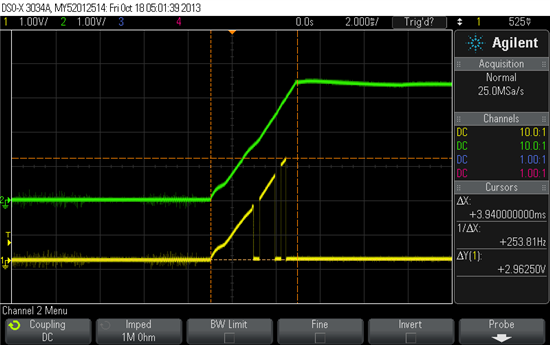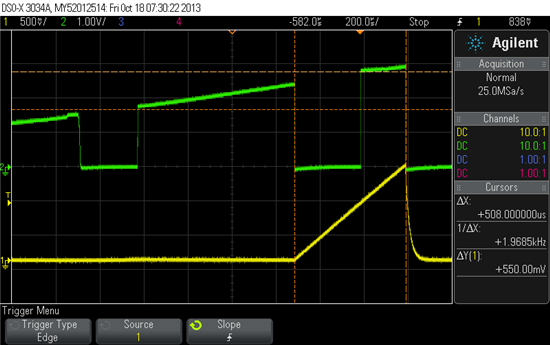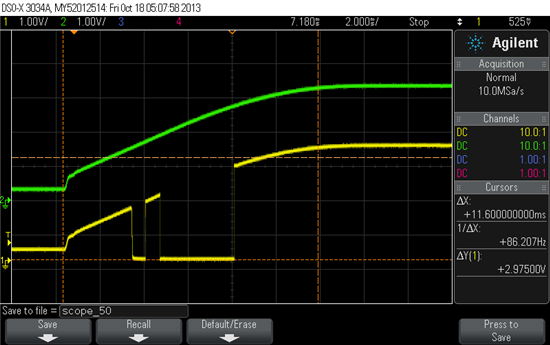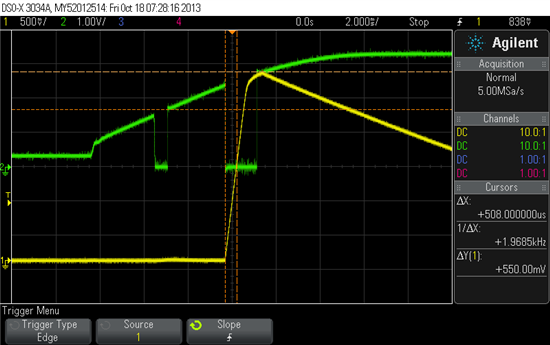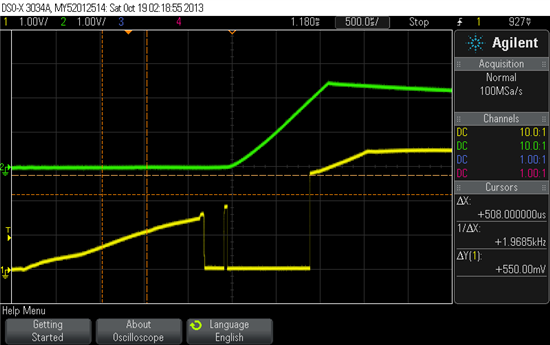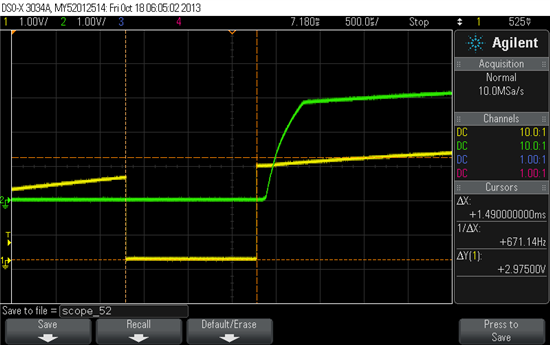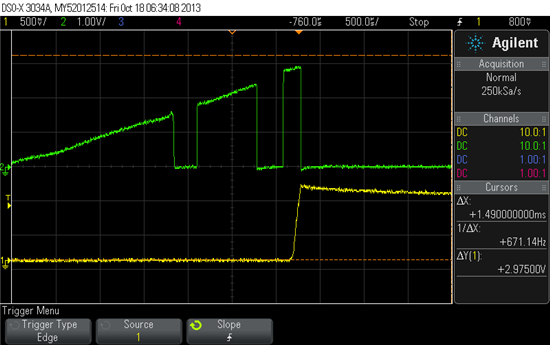I am using a TPS2421-1 hotswap in one of our designs. We have 16 boards that function correctly, and one that will work with some benchtop power supplies but not others. It does not work with power supplies that have a faster turn-on ramp. As expected, FLT pulses low before the onset of Vout turn-on. The FLT pin is pulled up to the Vin supply which ramps to 3.3V. When the FLT pin pulses low, Ct starts to charge. FLT recovers from the momentary low pulse when Vin exceeds the UVLO of 2.8V. Vout starts to ramp, but Ct hits the 1.4V limit, and the hotswap faults out.
What is interesting to me, is that the slower input power supply doesn't have the same problem. The voltage at Ct continues to charge while the IC is in UVLO well above and beyond the 1.4V threshold. Soon after the FLT pin goes high, the Ct pin starts to decay, but the FLT pin isn't tripped. I am currently attibuting this to the assumption that the Schmitt trigger is not yet properly powered (though I would expect it to be as soon as Vin >1V).
The other interesting nugget is the input voltage at which FLT pulses low (since FLT follows Vin via PU resistor unless actively pulled down), is higher one the board that doesn't work compared to the ones that do. FLT is pulled low on the "good" boards around 1.8V and stays low until the input voltage goes above 2.8V. On the "bad" board, FLT isn't pulled low until nearly 2.5V. Vin (green) and VFLT (yellow) are plotted for two different power supplies below. The first couple are on the "bad" board using the "fast" power supply, the next set is using the "slow" power supply, and the third is on a "good" board with the "fast" supply.
Bad board, Power-On, Fast Supply. FLT pin goes low
Bad board; Fast Supply: FLT pin (green) and CT pin (yellow). CT hits 1.4V and triggers FLT condition
Slow Supply, Bad Board Power On. FLT pin doesn't go low
Slow Supply, Bad Board Power On. FLT(green) pin doesn't go low, but CT (yellow) goes above and beyond 1.4V threshold
Good Board, Fast Supply, FLT(yellow) doesn't go low after Vout turn-on. Ct(green) goes above 1.4V, and FLT momentary low occurs aroun 1.8V
Increasing the capacitance on the CT pin to increase the fault timer appears to fix the problem on the "bad" board. I'm more interested in discovering the root cause and am interested in what controls the FLT pin to pulse low and at what voltage? All of the good boards have FLT pulse low around 1.8V, and the bad ones pulse low around 2.5V. Is this a defect or considered normal operation? What is the maximum, minimum, and typical input voltage at which FLT will pulse low?
Thank you for your time and consideration,
Carissa


